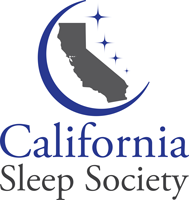By: Robyn Woidtke, RN, RPSGT
The status quo is no longer the status quo. I decided not to write about COVID-19 with regards to reopening and other such issues, however, with the crisis, there is also opportunity. Opportunity to re-evaluate current practices and re-engage with our patients and employees. We all look for ways to enhance customer (patient) satisfaction and the quality of the services which are provided. During this pandemic, the evolution of patient needs and concerns are foremost in our minds as is our employee safety. Although there are many ways to incorporate change into a practice 1, integrating the concepts of ISO quality principles and clauses may provide a wonderful framework from which to draw from.
What is ISO 9001? According to the American Society for Quality2, the ISO 9001 is an international standard for quality systems which can be implemented and applied for any size or any type of business. Using the standard can help organizations continually improve and ensure that processes are organized and efficient. Sleep Health is no exception. Using the seven principles of ISO 9001, the framing of the processes is relatively simple, but it takes a top-management down approach to implement and maintain. Top management goals often include success of the organization (profitability/satisfaction), controlling and managing new initiatives and risk mitigation, ISO 9001 can be useful integrated approach to achieve those goals.
The seven principles from ISO 9001 include (in no particular order): Customer focus, Leadership, Engagement of people, Process approach, Improvement, Evidence-based decision making and Relationship management 3. It is beyond the scope of this short article to provide a comprehensive overview of each of these areas, but the basic premise is by implementing a culture of quality throughout the organization, there will not only be improvement in internal processes and staff satisfaction but also in patient (customer) focus. All of the principles are interrelated with the impetus on how they contribute to a quality culture. For instance, the principle of engagement of people. This refers to the recognition, cultivation and empowerment of employees to act without fear if they see something wrong. Quality organizations encourage employees to take initiative if processes or outcomes need to be improved or have an idea to achieve the quality objectives of the organization. It could also involve self-evaluation and individual development. Cross training between roles has also been demonstrated to improve team work and understanding of other roles leads to improved communication, quality and facilitation of work flow in case of unexpected situations, i.e. Coronavirus.
ISO 9001 defines clauses and subclauses throughout, these include such aspects as the context of the organization, leadership, resources etc. In addition, ISO 9001 takes the “Plan-Do-Check-Act approach which I am sure many of us are already aware of and implementing. In our field as others, we have standard operating procedures (SOPs). SOPs are typically linked to the ISO clauses and are the “bones” of the entity. SOPs should be reviewed at regular intervals (not waiting until the next audit/accreditation comes due). One of the most frequent findings in an audit is either a SOP is not followed or that one should exist. Routine assessment can capture those inconsistencies and ensure that processes are up to date and being followed. SOPs should be an overview, but the work instruction should have the bulk of steps to follow.
The ISO standards are voluntary, but similar to a medical device company achieving ISO 13485 certification, such certification identifies that an organization has taken the extra step. While it may not be practical for all entities to become certified, using the ISO framework is a useful mechanism to employ, regardless of the size or facility your sleep health practice is located.
Resources and References:
- Becker’s Hospital Review https://www.beckershospitalreview.com/hospital-management-administration/iso-style-healthcare-designed-to-keep-patients-practitioners-and-management-safe.html
- American Society for Quality https://asq.org/quality-resources/iso-9001
- Quality Management Principles https://www.iso.org/publication/PUB100080.html
ISO 9001:2015 For Small Enterprises
What To Do? https://www.iso.org/publication/PUB100406.html

